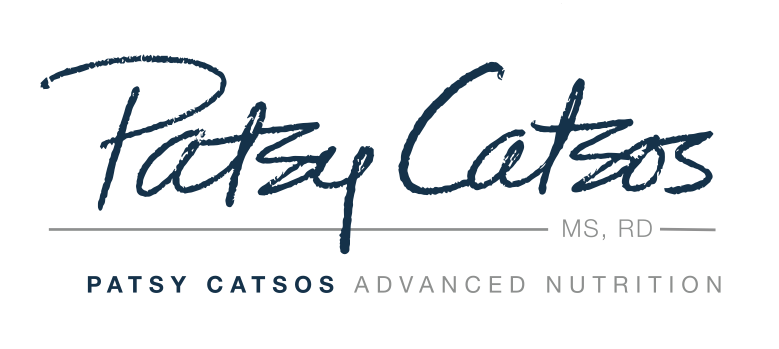Label reading is difficult enough in your own kitchen, and more so in the aisles of a busy grocery store.
It would be lovely to be able to make everything we eat from absolute scratch, but few of us have the time or the inclination to do so. Even if you tend to think “processing” is a dirty word, be honest—when was the last time you made your own cheese, ground your own flour, or cracked the shells off your own nuts? So, we all need to learn how to read food labels to determine which prepared foods are low in FODMAPs.
One approach to this task is to carefully read the ingredients statement on the label and avoid products that have known high-FODMAP ingredients in them. This usually works, but has shortcomings. It is time consuming. We don’t know the FODMAP status of some ingredients. Hidden FODMAPs can be present. For example, the word “flavorings” in a soup or broth can be hiding some onion or garlic juice. The amount of the high-FODMAP ingredient might be so small that rejecting the food because of its presence might be overkill.
Carefully read the list of ingredients and compare each one to your list of high- and low-FODMAP foods to see if it is suitable for your low-FODMAP diet. This task can leave you wishing for a product clearly marked with a low-FODMAP certification! (Tip: Organic is nice if you can afford it, but not relevant to decision-making for a low-FODMAP diet. This particular beef stock is probably high in FODMAPs.)
Third-party low-FODMAP certification programs have come to your rescue! Several certification programs are now widely in use. Certifications can relieve you of the detailed label reading and guesswork. I can’t speak for the situation in other countries, but here’s what you need to know if you live in the United States. Low-FODMAP certification programs are:
Voluntary. If the manufacturer of a food product wants a certification, they pay an independent organization to have it laboratory tested, data compared to set criteria, and certified. They may pay additional fees to display the related seal on their food products or to be included in the related iOS or Android app.
Not federally defined by the US Government. Unlike claims like “organic” or “gluten-free,” the federal government has not defined what “low-FODMAP” means or which foods can claim to be low-FODMAP. Each certification program has its own set of criteria for “low-FODMAP.”
Only as good as the organization that backs them up. Consumers need to ask themselves whether the certifying institution, business or laboratory is truly independent, trustworthy, and has a transparent and science-based process.
Two low-FODMAP certification programs that I trust are administered by Monash University and FODMAP Friendly. Even though these programs are based in Australia, they are certifying products made and sold in the United States, among other places. Rather than risk giving incorrect or dated information about these programs, I’m going to send you directly to their respective web sites for more information, and to see what the seals look like:
Monash University Low FODMAP Certification Program
One of my patients recently admitted to me, “I work full time, and have three kids—one with special needs. I just didn’t have time for label reading. I’m sorry, but I couldn’t fully follow the low-FODMAP diet you asked me to try.” For people like her, low-FODMAP certified groceries can’t materialize on the shelves of the local grocery store soon enough. Until then, I reminded her to check my shopping pages for groceries, baking supplies, and supplements. These pages do include some low-FODMAP certified foods; the rest I consider suitable for low-FODMAP diets based on my reading of the list of ingredients.
Originally published February 5, 2017. Revised and re-published June 19, 2024.
This page may contain affiliate links. We are a participant in the Amazon Services LLC Associates Program, an affiliate advertising program designed to provide a means for us to earn fees by linking to Amazon.com and affiliated sites.



